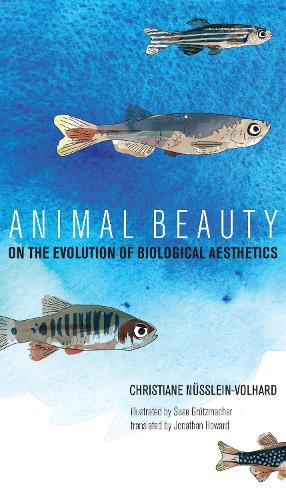
Animal Beauty: On the Evolution of Biological Aesthetics
(Hardback)
Publishing Details
Animal Beauty: On the Evolution of Biological Aesthetics
By (Author) Christiane Nsslein-Volhard
Illustrated by Suse Grtzmacher
Translated by Jonathan Howard
MIT Press Ltd
MIT Press
14th May 2019
United States
Classifications
Tertiary Education
Non Fiction
Evolution / Evolutionary biology
Animals in the arts
591.472
Physical Properties
Hardback
128
Width 102mm, Height 178mm, Spine 16mm
Description
An illustrated exploration of colors and patterns in the animal kingdom, what they communicate, and how they function in the social life of animals.Are animals able to appreciate what humans refer to as "beauty" The term scarcely ever appears nowadays in a scientific description of living things, but we humans may nonetheless find the colors, patterns, and songs of animals to be beautiful in apparently the same way that we see beauty in works of art. In Animal Beauty, Nobel Prize-winning biologist Christiane N sslein-Volhard describes how the colors and patterns displayed by animals arise, what they communicate, and how they function in the social life of animals. Watercolor drawings illustrate these amazing instances of animal beauty. Darwin addressed the topic of ornament in his 1871 book The Descent of Man and Selection in Relation to Sex, and did not hesitate to engage with criteria of beauty, convinced that animals experienced color and ornament as attractive and agreeable in the same way that we do, and that the role this played in mate choice pointed to a "sexual selection" distinct from natural selection. N sslein-Volhard examines key examples of ornament and sexual selection in the animal kingdom and lays the groundwork for biological aesthetics. Noting that color patterns have not been a research priority-perhaps because they appeared to be nonessential luxuries rather than functional necessities-N sslein-Volhard looks at recent scientific developments on the topic. In part because of N sslein-Volhard's own research on the zebrafish, it is now possible to decipher the molecular genetic mechanisms that lead to production of colors in animal skin and its appendages and control its pattern and distribution.
Author Bio
Christiane N sslein-Volhard is a German developmental biologist. She received the Albert Lasker Award for Basic Medical Research in 1991 and the Nobel Prize in Physiology or Medicine in 1995, with Eric Wieschaus and Edward B. Lewis, for research on the genetic control of embryonic development. Since 1985 she has been Director of the Max Planck Institute for Developmental Biology in T bingen, where she also leads the Genetics Department.
